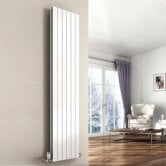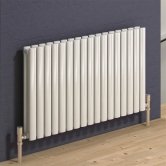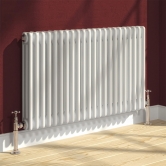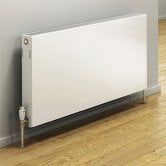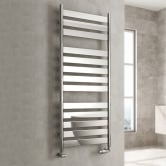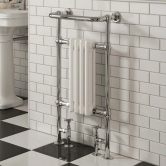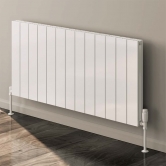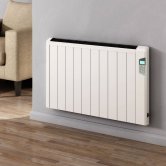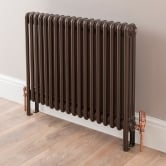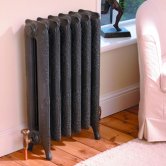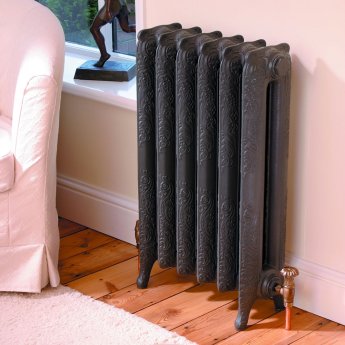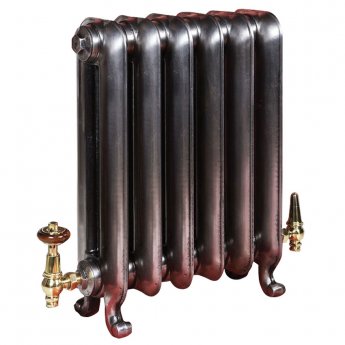Cast Iron Radiators
Our extensive range of cast iron radiators has an air of classic Victorian design while keeping up to date with the latest technology to provide the ultimate heating solution for your home.
Cast iron was one of the very first materials used in manufacturing radiators as it retains the heat for a longer period of time, keeping your house toasty long after the central heating has been turned off. The period radiator design is today used in many modern homes as well as more traditional thanks to its timeless appeal and because of our relationship with the manufacturers we can bring you these unique designs at an affordable price.
Filter Results
-
(2)
-
(1)
-
(1)
-
(1)
-
(2)
-
(2)
-
(2)
-
(2)
-
(1)
-
(1)
-
(1)
-
(1)
-
(2)
-
(2)
-
(2)
-
(3)
-
(2)
-
(2)
-
(2)
-
(2)
-
(2)
-
(3)
-
(1)
-
(1)
-
(1)
-
(1)
-
(1)
-
(1)
-
(1)
-
(1)
-
(1)
-
(2)
-
(1)
-
(1)
-
(1)
-
(1)
-
(1)
-
(1)
-
(1)
-
(1)
Cast Iron Radiators
The chunky styling of cast iron radiators is eternally popular. They are the obvious choice for anyone restoring a period property to its former glory, but also provide a focal point in modern properties. We've been using cast iron radiators in the UK for over a century, so what's so great about cast iron and what should you think about when buying one?
Victorian Technology
The idea of having some form of heating which heats the whole room is nothing new; the Romans had underfloor heating in their villas 2,000 years ago. In the Victorian times though, most European homes were heated by a series of fireplaces which were relatively inefficient at heating a whole room at a time. The story goes that a wealthy St Petersburg inventor was so fed up by the freezing Russian winters that he put himself to work developing something a bit more efficient. The first radiators which came on the market in the 1870s ran on steam, rather than being filled with water as they are today. By the 1890s, the cast iron radiators that we all know and love were introduced and have never really gone out of fashion since.
Why Cast Iron?
100 years ago, there weren't the materials for making radiators which we have today, so cast iron was chosen because it was plentiful and lots of people knew how to manipulate it. Cast iron hasn't fallen out of use though, and that's because this material has several benefits which make it perfect for using to make radiators.
- Heat retention - cast iron takes a while to heat up, but once heated, it will stay hot for longer than other types of metal. This makes them an energy efficient choice too.
- Versatility - cast iron is easy to shape and mould in the hands of a skilled craftsman. Cast iron radiators can be as simple or complex as you want them to be - some of the original Victorian cast iron radiators are very elaborate indeed.
- Affordability - when you're looking at the price of your radiators it's important to think about the cost over the lifetime of the radiator and not just the purchase price. Cast iron radiators are built to last and can provide heat to your home for decades, long after a radiator made from a different material has started to rust or deteriorate.
Could Cast Iron Radiators Be Right For Your Home?
If you're tempted by the traditional look of cast iron radiators then there is a lot to think about before jumping in and buying the first set of radiators you spot.
Salvaged Vs New
Often the first thing you have to decide is whether you're going to try to source some original Victorian or Edwardian radiators or get some brand-new ones. There's nothing quite like the feel and appearance of the original thing, but there are some drawbacks to this approach too. Firstly, the chances of you being able to find just the right number and size of matching radiators to replace each one in your home is slim. Also, radiators which have been in use for over a century tend to gather sludge inside, and several layers of paint outside. It can be expensive to bring old radiators up to modern standards, so don't fall into the trap of thinking that you can save money by scouring the architectural salvage yards.
Quantity to Purchase
You'll need to take advice from your plumber or heating engineer about how many radiators you can connect up to your current boiler. A smaller capacity of boiler will mean fewer radiators, so if you can't have as many radiators as you want, you might be faced with compromising on either the number of radiators, or by buying a new boiler. Connecting up modern cast iron radiators isn't tricky, but if you've salvaged old radiators with all manner of weird and wonderful pipework and connectors, you should probably mention this to your plumber before he arrives to start work.
Space
Part of the appeal of cast iron radiators is that they are chunky and provide a design statement, but this also means that they take up more space than most modern radiators. This isn't a problem if you have a large period property with wide corridors and cavernous rooms, but in a small new-build it could be a real issue. Check dimensions carefully before deciding what radiators you need - cutting a piece of paper the same size is a useful technique for working out how much floor space you'll be giving up.
Style and Finish
Most cast iron radiators are black or white, and these are still the colours which most customers prefer. One of the benefits to cast iron though is that it is so easy to paint and change the colour with an enamel spray paint. Style isn't as easy to change as the colour, so it's probably best to choose a cast iron radiator in a style which isn't going to go out of fashion and which you'll want to replace in a few years.


